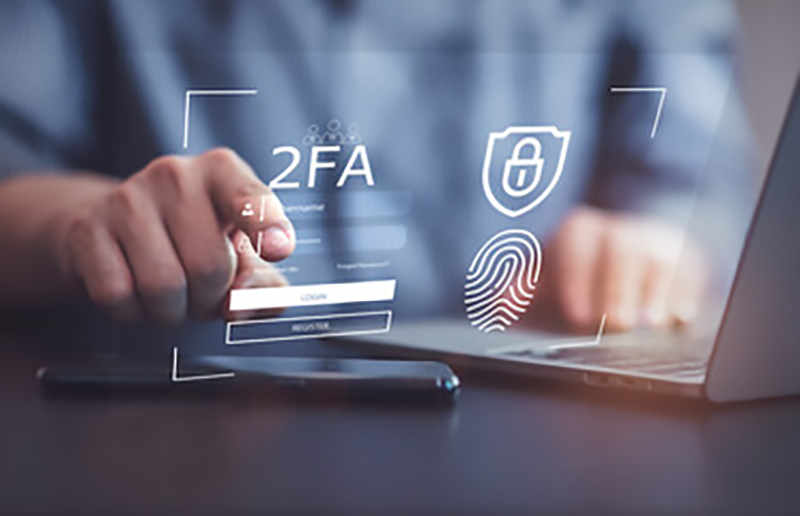Scareware attacks can catch you off guard. These attacks can harm your devices, steal your information, or even cost you money.
Here, learn how scareware works, what signs to watch for, and the best ways to defend yourself and your business from these underhanded attacks.

How Scareware Attacks Your Employees & The Risk To Your Organization
Scareware is a type of social engineering attack that uses fear to mislead people. This attack involves cybercriminals making you or your employees panic and act without thinking. They might show fake warnings and messages that look real and urgent, pushing people to download malware, pay money, or share sensitive information.
When scareware deceives one of your employees, it can quickly become a problem for your whole organization. The downloaded malware might open the door for hackers to steal company data or damage your systems. If someone pays the scammer, your organization could lose money. Worse, if personal or business data is handed over, it can lead to bigger attacks, like Ransomware and data breaches.
Scareware is not a small issue. The Federal Bureau of Investigation (FBI) Internet Crime Complaint Center (IC3) reported that tech support frauds, which often include scareware tactics, caused a $54 million loss in 2019. There were 13,633 complaints filed in the U.S. alone. Specifically, scareware attacks led to $2,009,119 in losses that same year.
Recognizing Scareware Alerts
Scareware tricks you by using fake alerts to scare you into making bad decisions. These alerts often pop up while you’re browsing online, and they look real. They might say things like:
- “Your computer has been hacked!”
- “Your files are at risk!”
- “Click here to fix the problem!”
Scareware can be deceptive, but there are clear signs to watch for. First, pay attention to urgent warnings. Real security alerts don’t try to scare you into action. If a message says something like “Act now or lose everything,” it’s likely scareware.
Also, look out for strange pop-ups that don’t match the usual style of your trusted security software or browser notifications. Another red flag is a demand for payment. If the alert asks you to pay to “fix” your computer, it’s almost certainly fake.
One of 2Secure’s clients experienced an unexpected pop-up that appeared on his screen, claiming his computer was infected and a severe Windows issue had been detected. The persistent alert, which included a number to call, seemed official and made his computer unusable. Worried about losing files, he called the number, where the caller blamed him for the problem, claimed his antivirus wasn’t enabled, and pressured him to make additional purchases.
Fortunately, the client called for 2Secure’s help, which prevented him from becoming the scammer’s next victim.
Another thing to check is for typos or poor design. Many scareware messages have spelling mistakes or low-quality graphics that make them stand out as suspicious.
How To Stop Scareware Before It Spreads
Falling victim to a scareware attack can feel overwhelming, but taking the right steps can help limit the damage. Scareware can disrupt your business and even leak sensitive data. For example, in 2018, a Latvian man pleaded guilty to a scareware scheme that targeted visitors to the Minneapolis Star Tribune’s website. This case shows how easily scareware can harm businesses and their customers.
Here’s what you can do if your business is hit:
- Don’t Click Or Download – If you see a suspicious alert, don’t click on it. Close the browser window or shut down your device if needed.
- Run A Real Security Scan – Use trusted software to check if your computer is infected. Get endpoint protection solutions across all your devices to provide comprehensive security against various threats, including scareware.
- Educate Yourself And Your Employees – Share details of the attack with your team so they know what to watch out for. This is especially important if the scareware came through email or a shared link. Educating your employees helps stop the problem from spreading further.
- Keep Systems Updated And Data Backed Up – Update your software and security tools regularly to block these attacks. Plus, Regularly backup your data, so you won’t be as susceptible to scareware ransom demands.
- Report It – If someone clicks by mistake, report it right away so the IT or Cybersecurity team can take action and prevent more problems. Also, report the attack to the appropriate authorities, like the FBI’s IC3.
If your business becomes a target of a scareware attack, act quickly to minimize damage and prevent further exploitation by consulting a Cybersecurity expert, notifying affected parties, and implementing mitigation and recovery steps.

FAQ
What Is Scareware & How Does It Work?
Scareware uses fake warnings to scare you into downloading malware, paying money, or giving away personal information. It often appears as a pop-up or fake alert claiming your computer is infected or at risk. These alerts look real, creating urgency to make you act without thinking. Once you click or follow the instructions, scareware can install harmful software, lock your device, or steal sensitive data.
How Can I Tell If An Alert Is Scareware?
Scareware often has clear red flags, such as overly urgent messages like “Your system is at risk!” or demands for immediate payment to “fix” the issue. Other signs include pop-ups that look different from your usual security software, spelling mistakes, and low-quality graphics. If an alert seems suspicious, don’t click on it—close the browser or device immediately.
What Are The Best Ways To Defend Against Scareware?
The best defenses include using endpoint protection and keeping all your devices updated. Educate yourself and your team about scareware to recognize the signs early. Don’t click on unexpected alerts or download suspicious files. If you suspect scareware, run a legitimate security scan to check for threats. Reporting scareware incidents to your IT team or Cybersecurity professionals can also help stop the issue from spreading





